Solar eclipse of March 31, 2090
A partial solar eclipse will occur on March 31, 2090. A solar eclipse occurs when the Moon passes between Earth and the Sun, thereby totally or partly obscuring the image of the Sun for a viewer on Earth. A partial solar eclipse occurs in the polar regions of the Earth when the center of the Moon's shadow misses the Earth.
| Solar eclipse of March 31, 2090 | |
|---|---|
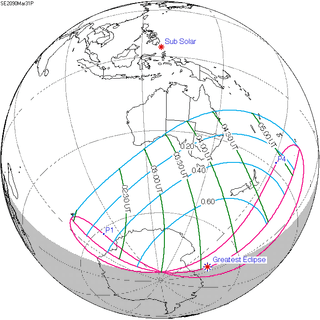 Map | |
| Type of eclipse | |
| Nature | Partial |
| Gamma | -1.1028 |
| Magnitude | 0.7843 |
| Maximum eclipse | |
| Coordinates | 72.1°S 156.3°W |
| Times (UTC) | |
| Greatest eclipse | 3:38:08 |
| References | |
| Saros | 150 (21 of 71) |
| Catalog # (SE5000) | 9710 |
Related eclipses
Solar eclipses 2087–2090
This eclipse is a member of a semester series. An eclipse in a semester series of solar eclipses repeats approximately every 177 days and 4 hours (a semester) at alternating nodes of the Moon's orbit.[1]
| 120 | May 2, 2087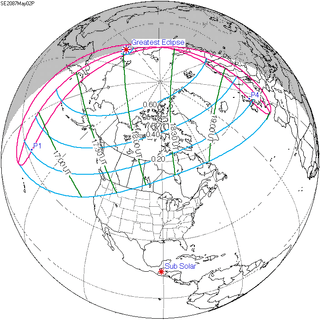 Partial |
125 | October 26, 2087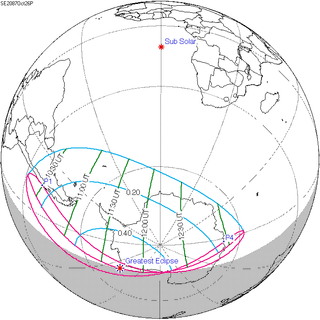 Partial |
| 130 | April 21, 2088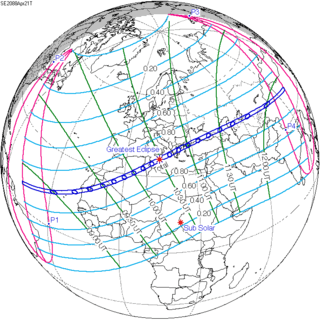 Total |
135 | October 14, 2088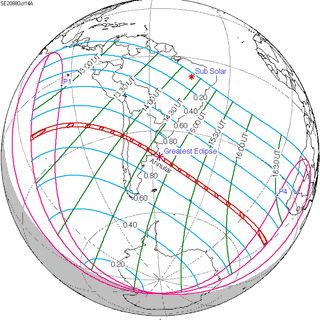 Annular |
| 140 | April 10, 2089 Annular |
145 | October 4, 2089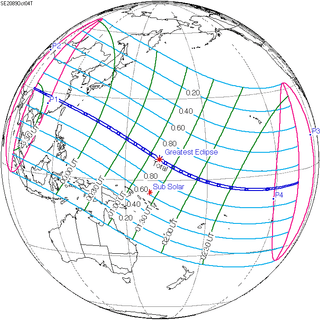 Total |
| 150 | March 31, 2090 Partial |
155 | September 23, 2090 Total |
Tritos series
This eclipse is a part of a tritos cycle, repeating at alternating nodes every 135 synodic months (≈ 3986.63 days, or 11 years minus 1 month). Their appearance and longitude are irregular due to a lack of synchronization with the anomalistic month (period of perigee), but groupings of 3 tritos cycles (≈ 33 years minus 3 months) come close (≈ 434.044 anomalistic months), so eclipses are similar in these groupings.
| Series members between 1901 and 2100 | |||
|---|---|---|---|
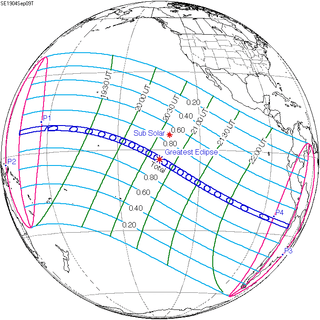 September 9, 1904 (Saros 133) |
 August 10, 1915 (Saros 134) |
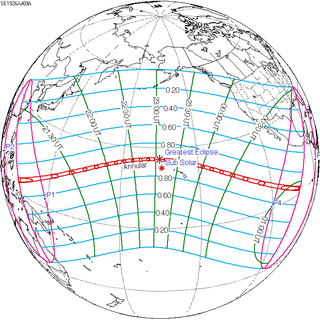 July 9, 1926 (Saros 135) | |
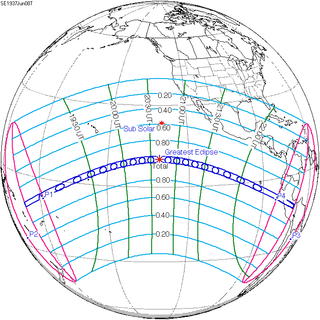 June 8, 1937 (Saros 136) |
 May 9, 1948 (Saros 137) |
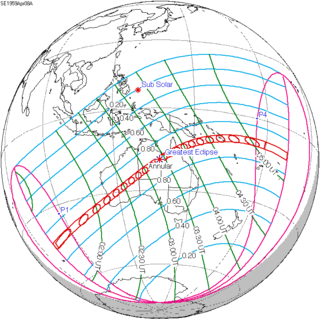 April 8, 1959 (Saros 138) | |
 March 7, 1970 (Saros 139) |
 February 4, 1981 (Saros 140) |
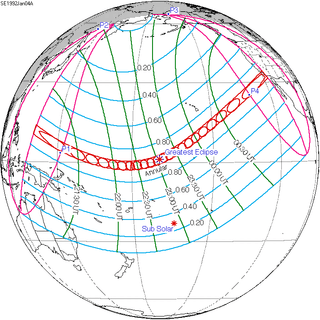 January 4, 1992 (Saros 141) | |
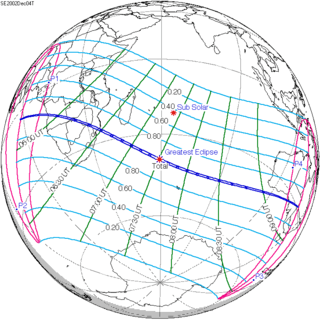 December 4, 2002 (Saros 142) |
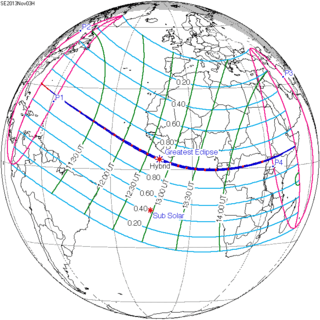 November 3, 2013 (Saros 143) |
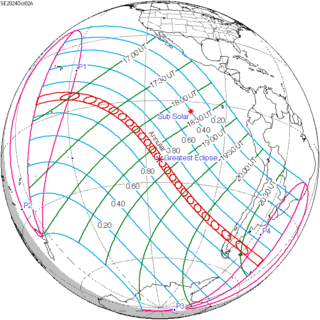 October 2, 2024 (Saros 144) | |
 September 2, 2035 (Saros 145) |
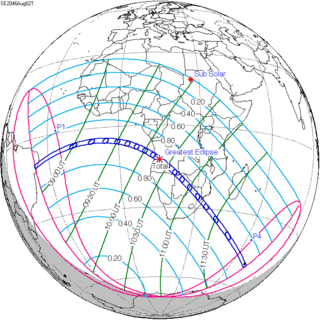 August 2, 2046 (Saros 146) |
 July 1, 2057 (Saros 147) | |
 May 31, 2068 (Saros 148) |
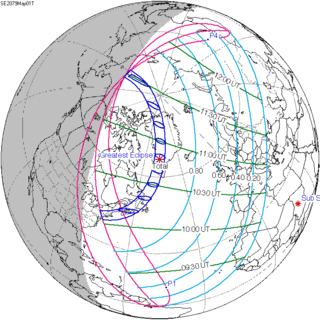 May 1, 2079 (Saros 149) |
 March 31, 2090 (Saros 150) | |
Metonic cycle
The metonic series repeats eclipses every 19 years (6939.69 days), lasting about 5 cycles. Eclipses occur in nearly the same calendar date. In addition, the octon subseries repeats 1/5 of that or every 3.8 years (1387.94 days).
| 21 eclipse events between June 12, 2029 and June 12, 2105 | ||||
|---|---|---|---|---|
| June 11–12 | March 30–31 | January 16 | November 4–5 | August 23–24 |
| 118 | 120 | 122 | 124 | 126 |
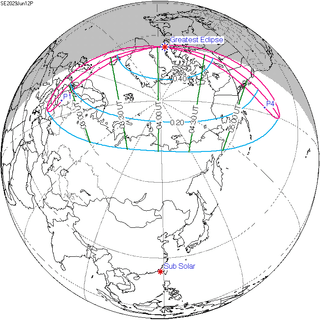 June 12, 2029 |
 March 30, 2033 |
 January 16, 2037 |
 November 4, 2040 |
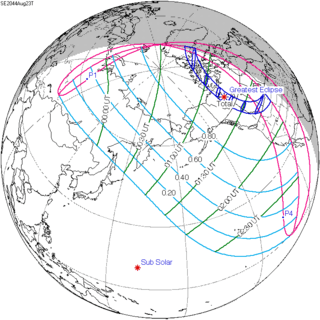 August 23, 2044 |
| 128 | 130 | 132 | 134 | 136 |
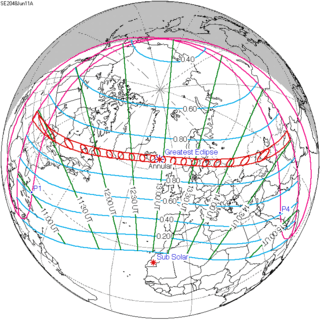 June 11, 2048 |
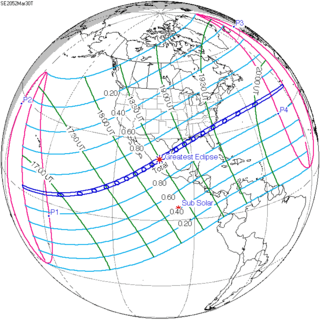 March 30, 2052 |
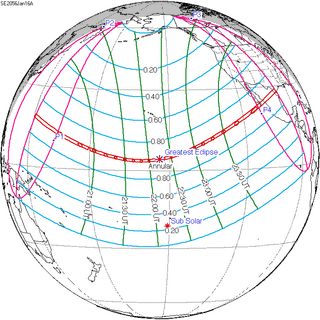 January 16, 2056 |
 November 5, 2059 |
 August 24, 2063 |
| 138 | 140 | 142 | 144 | 146 |
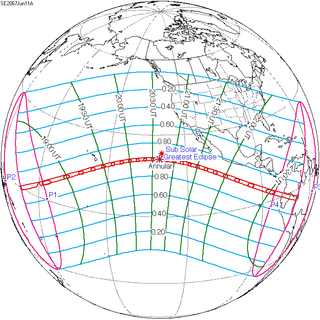 June 11, 2067 |
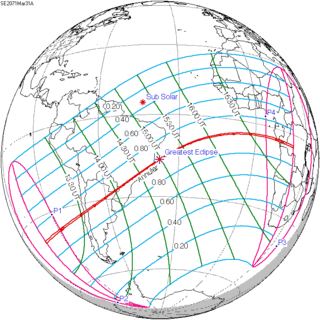 March 31, 2071 |
 January 16, 2075 |
 November 4, 2078 |
 August 24, 2082 |
| 148 | 150 | 152 | 154 | |
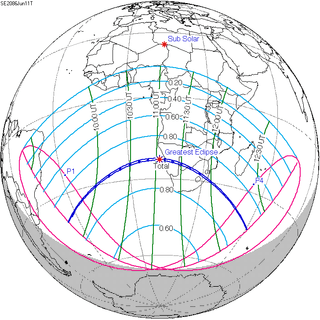 June 11, 2086 |
 March 31, 2090 |
 January 16, 2094 |
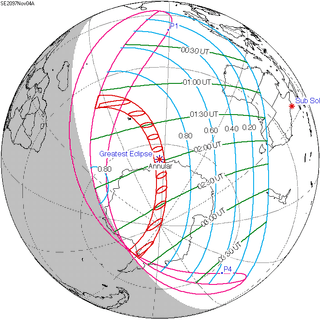 November 4, 2097 | |
References
- van Gent, R.H. "Solar- and Lunar-Eclipse Predictions from Antiquity to the Present". A Catalogue of Eclipse Cycles. Utrecht University. Retrieved 6 October 2018.
External links
- Earth visibility chart and eclipse statistics Eclipse Predictions by Fred Espenak, NASA/GSFC
.jpg)
